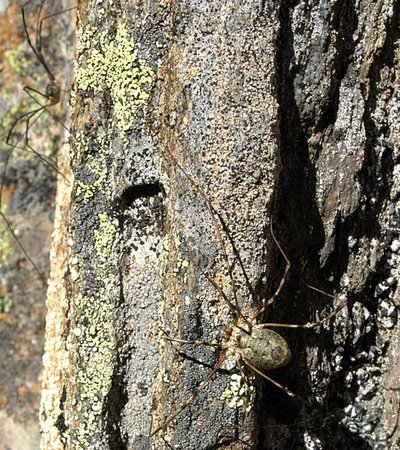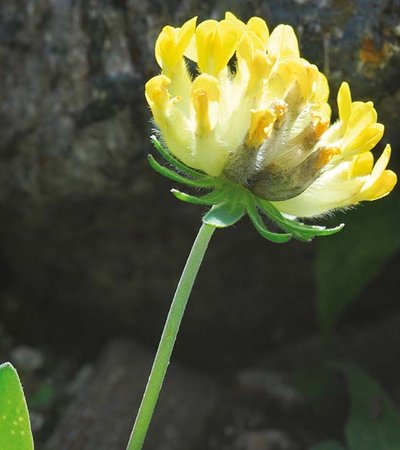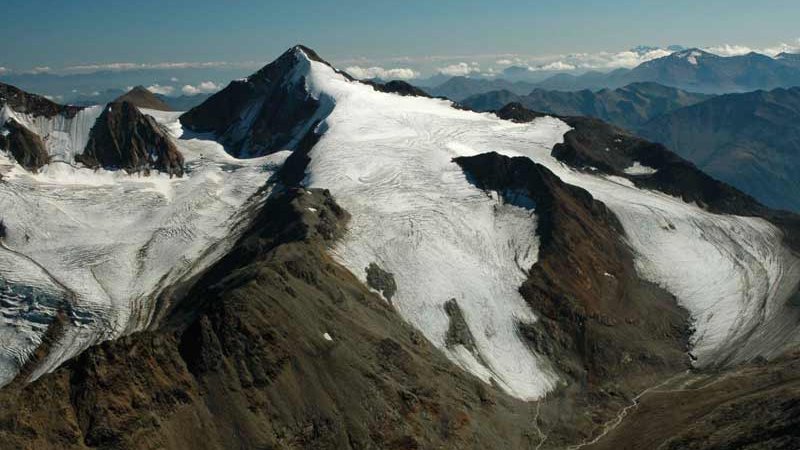A new habitat is formed – the glacier forefield
Glaciers disappear and retreat. But at the same time this also gives rise to something new: the glacier forefields. At first glance, these areas which have become free of ice seem like unremarkable, lifeless screes. But this impression is misleading. After just 5 to 10 years, the areas are populated by plants and animals and used as a habitat. Every year, the edge of Rotmoosferners glacier (big image, glacier in the valley floor) retreats by some 20 m and lets the glacier forefield grow. Parallel to this retreat, the forefield is now home to various age classes of plant and animal communities since 1850.
The first arrivals are the so-called pioneers. Among the plants these include the yellow saxifrage (Saxifraga aizoides, image l.), among the animals especially predatory species such as the glacier harvestman (Mitopus glacialis, image cn.) or various ground beetles. Out of the valley in the increasingly older locations, the density of living organisms rises, successional species such as pale cover or common kidney vetch (Anthyllis vulneraria, picture r.) populate the habitat. A theme trail leads across the ridge of the Hohe Mut to the glacier forefield in Rotmoostal.
Endangerment/protection
Glaciers and glacier forefields have been surveyed in ÖTZTAL NATURE PARK by natural history scientists for more than a hundred years. In doing so, the alpine research centre Obergurgl of Innsbruck University is an indispensable base for the primarily summerly field surveys. Glaciers and glacier forefields as specially protected habitats are particularly sensitive to stresses and strains.
Literature
E.M. Koch 2010, NATURPARK ÖTZTAL - Flyer „Von Gletschern Granaten und Glockenblumen“ E.M. Koch, B. Erschbamer (Hg) 2010: Glaziale und periglaziale Lebensräume im Raum Obergurgl



 Natur im Fokus "Lebensraum Gletschervorfeld"
Natur im Fokus "Lebensraum Gletschervorfeld"










